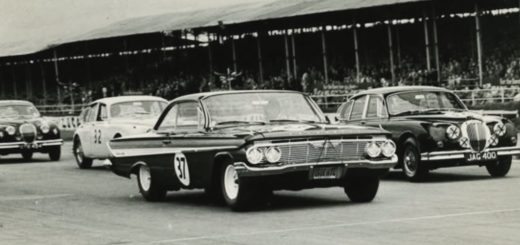The Chevy Cheyenne is a pickup truck sold exclusively in Mexico, but it looks very familiar to American eyes. If you think the Chevy Cheyenne looks eerily similar to the USDM Chevy Silverado, it’s because they’re almost identical. Both trucks ride on the T1 platform and have very similar trim structures and feature content. The primary difference is the badging on the tailgate.
Longtime Chevy truck enthusiasts may already be familiar with the Cheyenne nameplate. Back in the days of the Chevy C/K series trucks, before the Chevy Silverado was rebranded as a distinct model, Cheyenne was one of several trim levels available. The most prominent trims were the Custom, Scottsdale, Cheyenne, and Silverado.
The Custom played a similar role as it does now; it added a few basic features over the base, bare-bones work truck. The Scottsdale and Cheyenne trims were introduced in the 1970s, the former being a mid-range trim and the latter adding fancier features like wood trim and upgraded upholstery and audio systems. Finally, the Silverado was the top-tier trim introduced in 1975, and the rest is history.
The endurance of the Chevy Cheyenne nameplate in Mexico all has to do with the public perception of the names. In the U.S., GM decided to make the Chevy Silverado its own model in 1999 (the Chevy Cheyenne came out in Mexico in 2004) because “Silverado” was the name most closely associated with the C/K series trucks colloquially. However, in the Mexican market, the name “Cheyenne” carried more weight with a reputation as a more premium, prestigious, and rugged truck. Mexican truck drivers thought of the “Silverado” as the more utilitarian, work-oriented version of a Chevy truck. Similarly, the GMC Sierra succeeded the GMC C/K trucks in both markets because the Sierra trim level had a strong reputation.
In short, when the successor to the C/K series truck was created, “Silverado” had more brand equity in the States, and “Cheyenne” had a stronger reputation in Mexico.
So, while Chevy’s home market (and most of the rest of the world where it’s available) uses the Silverado name for the whole lineup of Chevy’s full-size pickup truck, Mexico does it a little differently. The two lowest trims of the Silverado (base and Custom) are still called “Silverado” south of the border. But the rest of the truck’s lineup, from the LT trim up to the ZR2 Bison model, all carry the name of Chevy Cheyenne.

















Comments
Thanks for writing this fun story, George! I’m a total GM history nerd, and miss the old days of the C/K trucks with their named trim levels (instead LT, LTZ, etc.) Kudos to Chevy for sneaking the Custom and High Country badges in on the modern Silverado, though.
My first Chevy pick-up in ’95 was a Cheyenne. I didn’t need/want all the luxury stuff on a Silverado.
My first new chevy pu was a Scottsdale 1988 model 350 v8 and 5 sp manual trans. My wife and I really loved and miss that truck.
The lowest trim level back then was “Custom DeLuxe”, not “Custom”, but I do appreciate the partial return of the name.
That became true after 1974. I own a 1974 Chevrolet Custom 10. It is absolutely the base model. It has no exterior trim, no drip rails, no rear bumper, not even a door-activated dome lamp (it has a light under the dash, manually activated by turning the headlight switch).
It still has the 250 Inline 6 (with some modifications) and 3 speed column shift, but I have added 15×7 rally wheels, AM/FM/CB combo radio (period correct, dash was not cut), and full factory gauges including tachometer calibrated to the 6 cylinder (it came from a 1973 GMC V-8 truck).
Custom Deluxe became the base model after 1974. Mine was also the last year for lap belts only, no seat belt or headlamp warning chime, and points distributor (I have upgraded to HEI).
My truck has three factory options: AM radio, HD rear springs, and Sunset Gold paint.
There was also a Cheyenne Super trim level. GMC branded their trucks as Sierra, High Sierra, Sierra Grande and Sierra Classic.
Also forgetting the Bonanza package available in the late 70’s that was a marketing playoff of the western TV show.
I thought it was because in Spanglish, it’s pronounced “CH- eeby CH-I-anne”. 😆